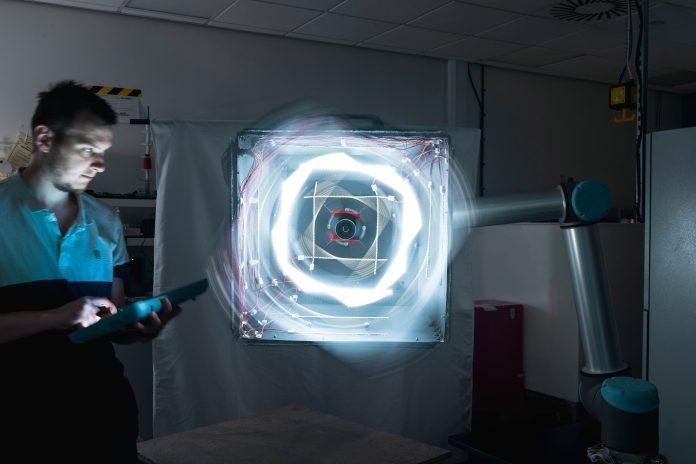A new remote concrete inspection device, known as “ALICS”, could save asset owners up to £1m a day through detecting faults
The remote concrete inspection platform, known as “ALICS” (Adaptive Lighting for the Inspection of Concrete Structures), could lead to increased inspection speed, accuracy, and safety, letting major asset owners to make significant cost savings.
Developed at the University of Strathclyde’s Advanced Nuclear Research Centre by the University’s Dr Marcus Perry, senior lecturer in Civil and Environmental Engineering, the project has also been shared resources and been financially supported by Cavendish Nuclear (Babcock), Altrad Babcock, Bruce Power, EDF Energy and InspectaHire.
The remote concrete inspection device has also enjoyed the support of Scotland’s innovation centres Built Environment – Smarter Transformation and CENSIS.
ALICS’s remote capabilities circumvent many of the challenges of manual inspection
Using advanced techniques in image capture, scene lighting and colour in combination with artificial intelligence, ALICS is easily able to detect faults in civil concrete infrastructure, including nuclear power plants and bridges.
Inspection and maintenance of this infrastructure is crucial to society and ALICS could help asset managers avoid outages and closures that can cost up to £1m per day.
Marcus Perry, senior lecturer in civil and environmental engineering at the University of Strathclyde, says:
“Partnerships between industry, Scottish innovation centres, and universities are different. They allow research to be designed, funded, and delivered with continuous dialogue between all three parties.
“This sustained feedback means industry partners can steer our research direction more effectively. This ensures the academic delivery team deliver not only world-leading science, but high-impact engineering outputs and products with real world applications.”
The concrete inspection device could transform the built environment
Fiona MacDonald, impact manager at BE-ST, said: “BE-ST is delighted to support such a collaborative and impactful R&D project that can enhance not only safety within the industry, but the efficiency and commercial performance of invested partners all while creating a technology with the potential to truly transform operational performance within our built environment.”
Rachael Wakefield, business development manager at CENSIS, also commented: “The ALICS project is a notable example of how imaging technology can be used to make critical infrastructure and the built environment safer. Inspection is rightly an important part of maintaining assets, and with innovative technologies like this, it can be done continuously and more efficiently.
“This is also a great demonstration of how, by bringing all the expertise and skills we have in Scotland together, we can take on global challenges.”

















